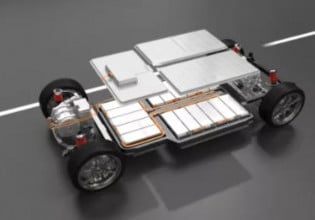Johnson Controls Unveils 48V Micro Hybrid Battery Module at North American International Auto Show
Johnson Controls, Inc., the world's leading supplier of automotive batteries, introduced its 48 volt Micro Hybrid battery demonstration module as part of its full spectrum of advanced energy storage solutions for automobiles. Power Solutions President Alex Molinaroli unveiled the company's next generation technology at the North American International Auto Show in Detroit.
At a system cost of about $1,000 to $1,500, these start-stop architectures require new starter/alternator designs in addition to the new battery modules. Still, the cost is substantially lower than the cost of a full hybrid or electric vehicle and the mileage benefits will be significant. Payback from the higher mileage is expected to take three years or less. These systems may appear in Europe as soon as 2015.
"Johnson Controls sees opportunities for the development of evolutionary energy storage systems that offer even more fuel efficiency than Start-Stop at less cost than a hybrid or electric vehicle," said Alex Molinaroli, president, Johnson Controls Power Solutions. "Even as Start-Stop vehicles become part of the mainstream in Europe and start to take hold in the U.S., Micro Hybrid technology has the potential to deliver the next level of fuel efficiency along the spectrum of vehicle performance, reaching upwards of 15 to 20 percent in fuel economy."
Leveraging a dual-voltage architecture, Johnson Controls' Micro Hybrid battery system would involve a low voltage lead-acid battery and a 48 volt Lithium-ion battery that enable optimization of energy generation and consumption, thus saving fuel.
In prospective development programs with key automakers, the 48 volt battery could support higher power loads such as electric air-conditioning, active chassis technologies and the capture of direct regenerative power energy braking. The 12 volt battery would continue to provide power to the vehicle starter, interior and exterior lights, and entertainment systems such as radios and DVD players.
"We expect this technology to be adopted in Europe first, due to more stringent fuel economy and emissions standards, and then quickly move to U.S. markets in the next few years with mass adoption by 2020," said Molinaroli.






